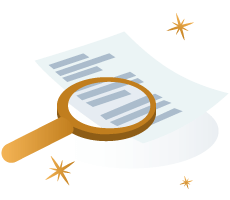How To Set Up Your Water Bill 2022

Have you recently moved and want to know how to set up your water bill? Our guide will explain everything you need to know. Read on to find out how to set up water bill.
Can I Choose My Water Supplier?

No, unlike your gas and electricity, you must set up water bill with the water supplier that handles your region.
However, businesses have more freedom to choose their supplier because of regulation changes in 2017 that will hopefully transition to residential water supply in the future. You can read more about choosing your water supplier if you’re a business owner in our guide to switching water suppliers.
How Can I Find Out Who Supplies My Water?
The quickest way to find out who your water supplier is to check a recent bill or statement. That will tell you who your supplier is, but if you’ve just moved in, perhaps you don’t have a bill or statement handy, so you call our friendly team on 020 3966 0546. They will be able to help you find out who your water supplier is, and set up your other utilities all in a single call.
To set up water bill, you can look on the map below to work out which supplier your home falls under.

It’s important to note that when you set up water bill, you will need an account for your clean water and wastewater. Often both services will be with the same supplier, though there are some regions that are managed by different water companies.
When you set up water bill, your supplier will tell you if they’re going to set up water bill for both services or just the clean water, and they will also advise you who your wastewater company is.
What Do I Need to Set Up Water Bill?

The things you will need to set up water bill vary from supplier to supplier, but you can expect to be asked for things like:
- Your name and address
- Date of your move
- Contact number
- Email address
- Bank details - if you want to set up a direct debit
- Meter reading - if your property has a water meter
When Should I Set Up My Water Bill?

We recommend you wait until you move in before you set up water bill; however, some suppliers will let you set up your water bill up to six weeks before you move in.
Below, we’ve broken down some of the water suppliers and how much notice you need to give them.
You can also read the supplier moving home guides to find out everything you need to know to set up a water bill with those suppliers when you move house.
| Supplier | When you can notify them | Supplier Moving Home Guide |
|---|---|---|
| Affinity Water | Up to 30 days in advance | Affinity Water Moving Home Guide |
| Anglian Water | Up to five weeks in advance, at least 10 days notice if you require help reading your meter | Anglian Water Moving Home Guide |
| Severn Trent Water | Up to 28 days in advance | Severn Trent Water Moving Home Guide |
| Southern Water | Up to 30 days before or after you move | Southern Water Moving Home Guide |
| Thames Water | Up to 27 days in advance | Thames Water Moving Home Guide |
| Welsh Water | Only on moving day, or after you’ve moved in | Welsh Water Moving Home Guide |
| Wessex Water | Not specified, but you will need at least five days notice if you need help with reading your meter | Wessex Water Moving Home Guide |
| Yorkshire Water | Up to seven days before you move | Yorkshire Water Moving Home Guide |
What Payment Methods Can I Choose When I Set Up Water Bill?

Most suppliers offer similar options to pay your water bill. When you set up water bill, you can choose from payment options such as:
- Direct debit
- Automated payments hotline
- Bank transfer
- Cash payment
- At your bank
- By cheque
- Pay online
- Via an app
- On the supplier website
Depending on the water supplier, they may have more or fewer options.
You can find out what payment options are available on our supplier payment options guides.
| Supplier | Payment Options Guide |
|---|---|
| Affinity Water | Affinity Water Payment Options |
| Anglian Water | Anglian Water Payment Options |
| Southern Water | Southern Water Payment Options |
| Thames Water | Thames Water Payment Options |
| United Utilities | United Utilities Payment Options |
| Yorkshire Water | Yorkshire Water Payment Options |
Which Tariff Should I Choose When I Set Up Water Bill?
There are two main tariffs that all water suppliers can offer customers: metered and unmetered.
A metered tariff means you must have a water meter installed, and they will base your water bill on how much water you use at your home.
A metered tariff will often work out cheaper for customers who have a smaller household or use little water. Larger families will often find their water bill is more expensive with a metered tariff.
An unmetered tariff is for customers who don’t have a water meter. Your water supplier will calculate your bill by using Rateable Value.
Water companies use Rateable Value to calculate how much to charge households without a water meter. They used Rateable Value for everyone's bills until 1990. They based the current Rateable Value on the annual rental value of the property in 1993.

Customers whose property has a water meter installed can only choose a metered tariff.
For properties that don’t have a water meter installed, you can choose to request a water meter installation from their water supplier.
Customers will have a two-year trial period to find out if it’s cheaper with a water meter or not, and some suppliers, such as United Utilities, offer a lowest bill guarantee. This means that during your trial period, you will pay the cheapest rate between metered and unmetered.
Some parts of the UK are subject to compulsory metering, which means you don’t have a choice to pick an unmetered tariff when you set up your water bill. Suppliers such as Thames Water, Wessex Water and Portsmouth Water are compulsory water meter areas.
Depending on the water company, they may wait until there is a change of tenancy or ownership before installing a water meter, or they may contact existing customers to install a water meter.
Why are water meters compulsory? A water meter is compulsory when they designate a region as being under serious water stress. When an area is given that designation, your water company must install a water meter at properties in its catchment area, and have legal powers to install a water meter even against the customers’ wishes.
Other Tariffs Available When You Set Up Water Bill
Despite the limited choices of tariff options available to customers, there are some additional tariffs for eligible customers to choose from when you set up water bill, or at any other time as your circumstances dictate.
Not all suppliers offer all the additional tariffs, and they can have different names. However, they are a great way to save money on your water bill if you qualify for them.
| Additional Tariffs | How It Works |
|---|---|
| Payment Plan | A payment plan lets you split your bill into affordable payments. |
| Payment Holiday | A payment holiday gives you a short break from payments to help get your household cash flow in order. Payment holidays are usually available for up to three months. |
| Bill Discount | Some suppliers can help you with a bill discount, if you qualify, they will take off a certain percentage or match your payments. |
| WaterSure Tariff | The WaterSure Tariff helps vulnerable and high water consumption customers, such as those with certain medical conditions that require a large use of water. |
| Low Income Tariff | Customers who are on a low income, or are claiming certain benefits are eligible for a Low Income Fixed Tariff. |
| WaterDirect Tariff | You are eligible for the WaterDirect tariff if you are already in arrears with your Affinity Water bill and are unable to pay your current bill. You will also need to receive certain benefits that will allow the DWP to take a weekly payment from your benefits before you receive them. |
Again, the availability and eligibility of these tariffs can vary between water suppliers. But the eligibility criteria are often quite similar. For the WaterSure and Low Income tariffs, you will need to meet requirements such as:
| WaterSure | Low Income Tariff |
|---|---|
|
You or someone who lives in your household must receive one or more of the following benefits or tax credits:
AND
|
Low Income tariffs are for people who are suffering from financial hardship and require the use of more water than average customers, for example large families. You or someone who lives in your household must receive one or more of the following benefits or tax credits:
|
How Much Will I Pay When I Set Up Water Bill?
The rate you pay for your water, be it on a metered or unmetered tariff, will vary depending on the region that you live in.
As of 2021, the average water bill in the UK is £408 for combined clean water and wastewater charges.
Separately, that works out at £194 for your clean water and £213 for wastewater charges.
Daily, that’s £1.12. That’s great value for money when you consider what’s included.
| Clean Water | Wastewater |
|---|---|
|
|
You can read more about how much water bills cost in our guide to the average UK water bill.
Do I Always Have To Set Up Water Bill?

Normally, yes. However, customers who are renting their home, or students, may have the water bill included in their rent and, therefore, don't need to set up a water bill.
We recommend that you have a look at your tenancy agreement to see if it includes any reference to who pays the water bill. You can ask your landlord or rental agency if you’re unsure or the tenancy agreement doesn’t specifically state the responsibility.
In all other circumstances, such as for homeowners, you will need to set up your water bill when you move in.
